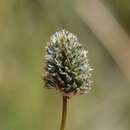en
names in breadcrumbs


Sesleria is a genus of perennial plants in the grass family.[3][4][5][6] The are native to Eurasia and North Africa. They are found in Albania, Austria, Baleares, Baltic States, Belarus, Belgium, Bulgaria, Corsica, Czechoslovakia, East Aegean Islands, Finland, France, Germany, Great Britain, Greece, Hungary, Iceland, Iran, Ireland, Italy, Crete, Crimea, Lebanon, Morocco, North Caucasus, Poland, Romania, Sardina, Sicilia, Spain, Sweden, Switzerland, Syria, Transcaucasus, Turkey, Ukraine and Yugoslavia.[7]
The genus was circumscribed by Giovanni Antonio Scopoli in Fl. Carniol. on page 189 in 1760.[7]
The genus name of Sesleria is in honour of Leonard Sesler (d. 1785), German-Italian doctor and botanist who maintained a large botanical garden.[8]
Kew accepts 36 species;[7]
It formerly included; species now considered better suited in other genera such as: Aeluropus, Ammochloa, Bouteloua, Dactylis, Elytrophorus, Festuca, Koeleria, Oreochloa, Poa, Sclerochloa, Sesleriella, Triodia and Triraphis.[9]
Sesleria is a genus of perennial plants in the grass family. The are native to Eurasia and North Africa. They are found in Albania, Austria, Baleares, Baltic States, Belarus, Belgium, Bulgaria, Corsica, Czechoslovakia, East Aegean Islands, Finland, France, Germany, Great Britain, Greece, Hungary, Iceland, Iran, Ireland, Italy, Crete, Crimea, Lebanon, Morocco, North Caucasus, Poland, Romania, Sardina, Sicilia, Spain, Sweden, Switzerland, Syria, Transcaucasus, Turkey, Ukraine and Yugoslavia.
The genus was circumscribed by Giovanni Antonio Scopoli in Fl. Carniol. on page 189 in 1760.
The genus name of Sesleria is in honour of Leonard Sesler (d. 1785), German-Italian doctor and botanist who maintained a large botanical garden.